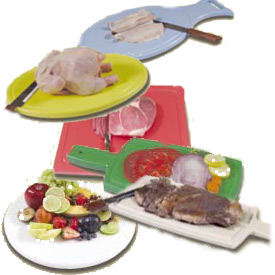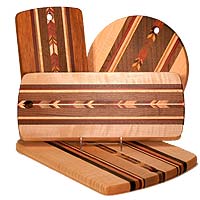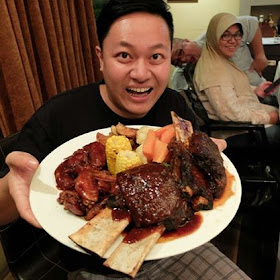Plastic vs Wooden cutting boards
Plastic cutting boards are more hygienic
"No way. At one time, many believed that the microscopic pores in a wooden cutting surface harbored harmful bacteria. Plastic, they thought, was too smooth for bacteria to hold on to. It’s quite the opposite. In 1993, microbiologists at the University of Wisconsin’s Food Research Institute infected wooden and plastic cutting boards with a smattering of bacteria that cause food poisoning.Their findings? The bacteria shriveled up and died on the wooden boards in about three minutes, but they multiplied out of control on the plastic boards. So if you’re looking for a sterile cutting surface, go with wood. Plastic can still be clean, but scrub it down with a mild solution of bleach and water every week or so". -askmen.com
"Wood has some advantages over plastic in that it is somewhat self healing; shallow cuts in the wood will close up on their own. Wood also has an advantage over other materials because in general, it has a natural anti-septic property. Hardwoods, are tightly grained wood with small pores, such as hard maple are best. Good hardness and tight grain helps reduce scoring of the cutting surface and seepage of liquid and dirt into the surface." -Wikipedia
Conversely, one argument against plastic is that it could chip off gradually and tiny particles of inorganic plastic could lodge themselves in your food. Whether you choose wood or plastic will probably be a personal decision, and you should always keep cutting board safety in mind".
Cutting board safety
Whether you choose a plastic or wood cutting board, keep the following safety tips in mind:
Wash all cutting boards with hot soapy water and a brush after each use.
Sanitize both wood and plastic cutting boards with a bleach based cleaning spray.
Discard excessively worn cutting boards.
Designate one cutting board for meat, poultry, and fish, and another for fruits, vegetables, and breads.











No comments :
Post a Comment